Tosh Berman's Blog, page 222
July 19, 2014
July 19, 2014

July 19, 2014
Nothing works here. As a card carrying existentialist I can understand changes in one’s life, but this is ridiculous. Ever since the bombings it has been difficult for me to find kitty food for my Siamese mixed with a Persian. She usually likes meow mix, but lately due to the explosions and the sense of dread around the area, she hasn’t been eating properly. I used to get wet and dry food, but now it is very difficult to find any wet cat food in the market. Usually I would try to get it from Egypt, but even that is drying (no pun intended) up. Her favorite was tender favorites® with real salmon in sauce, but now, if I can find it, she will eat Tender Centers Salmon & White Meat Chicken Flavor, but that as well, is not that easy to find. In fact, even having water for my cat is difficult. I’ve been hearing rumors that the sewerage system either is or was placed on the verge of collapse, that groundwater contamination is in the enclave.
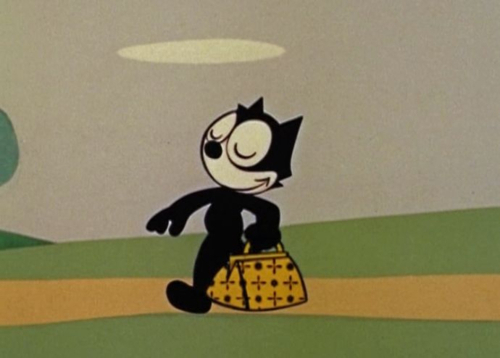
I invested in owning a bird’s cage, because I had birds as well, but under these conditions it’s very hard to keep them alive. Nevertheless the bird cage is suitable for me to put my kitty inside, when I have to continue to move around, in case of bombings or attacks. My cat’s full name is Felix the Cat, but of course I call her Felix. I was inspired to call her Felix because of the cartoon series. Over time, or ever since I was a child, I would lose a lot of property, and I was intrigued by Felix, because of his “Magic Bag of Tricks” that could assume an infinite variety of shapes and forms at Felix’s request. I would imagine if I had to leave my home right away, all I need would be the magic bag. I think Felix (the cartoon character) influenced my interest in having a cat. Also to open up a pet store here in the Gaza Strip.
It’s a tricky business, because let’s face it, what I offer at the store is a luxury item, and without political or financial stability, people are not thinking of getting a bird or a cat. I have approached some parents, especially mothers that a child can find great comfort in owning and taking good care of a cat. Birds are good as well, but their survival rate in the current situation is not all that good. So, my main inventory is cats, but it is a very difficult business. Also with the lack of pet food in general, I'm feeling guilty obsessing over my cat over the other cats in the inventory.
Sometimes I feel like I should let all my cats free, because I don’t think I can stomach the idea that my structure can be bombed and lose all my animals in such a fashion. If somehow they disappear on one night, at least I can have the fantasy that they are somewhere in the area surviving like the cunning beasts that I know them to be. My Felix has a good personality. One can hope that she will use her bag of tricks, and make a flying carpet, so both of us can float over the landscape and marvel a world that is down there, and me and Felix are not part of that world.
Published on July 19, 2014 10:48
July 18, 2014
July 18, 2014

July 18, 2014
“I put a spell on you because … you’re mine.” I want to make you do the evil things I want you to do. I like to tease you, to see how you would react. I lightly batter you around, and forbid you to strike back. But when you do darling, my little darling, I’ll bite you so hard, that my teeth marks will be on you for life. You can scream and shout, but no one will believe you. Because my little darling, you are mine.

You will be running away from me on a beach, but alas, the land is wide and open. I can just take my time and send you my missile of love, just to scare you, and to remind you, forever more, that you’re mine. It doesn’t matter if you’re surrounded by love ones, or those who care, because I will destroy them to get to you. You’re going to realize you’re a loon and you’ll be scared of the cunning moon, under the crepe of world-pain that won’t pass baby, for -oh terror! - All is under a jar of glass, and I got you babe, because you’re mine.
You’re gonna ask why? And I’m gonna tell you nothing, because I’m not lying, I’m after you. I got a fort to protect, and you my dear love, don’t fit in my scheme of things. I like you, but you’ll never believe me, because the way I treat you. I was born to love, but the world won’t let me love you the way I always want to. And on top of that, you have put me down, and I don’t want chance to define our relationship, so it’s best to show the might that I have, because I can, and I can do evil, however you want to define evil.
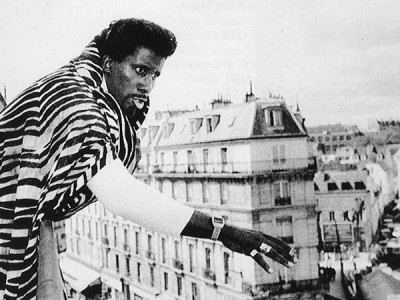
Me and my friends sit on a top of a hill to watch over you. We’re laughing, we’re drinking, and we want to make you understand that we can do this, because we can. I often feel ashamed, feel blue, and a touch drunk, but what can I do? Back home, I have a model of your town, and your home, and I can sit there and look at it, and once in a while I can go by there and flick a building down with my index and middle finger. I like the feeling that you’re mine, that I got you, and I want you forever. We’ve been through this so many times, and the results are still the same. Me on top and you on the bottom, because I put a spell on you, and you’re mine.
Published on July 18, 2014 12:55
July 17, 2014
July 17, 2014

July 17, 2014
“To all who come to this happy place: Welcome. Disneyland is your land. Here age relives fond memories of the past, and here youth may savor the challenge and promise of the future. Disneyland is dedicated to the ideals, the dreams, and the hard facts that have created America, with the hope that it will be a source of joy and inspiration to all the world.” Walt Disney, July 17, 1955, 4:43 PM.
As in my post entry yesterday (July 16, 2014), the fort must be defended at all costs. My personal memory of my one-time visit to Disneyland as a child, was a feeling of anticipation, nervousness, and fear. And that is before I even step into the entrance to the Disney kingdom. For most people, the amusement park is a place of great joy, but for me, it was a landscape of horror. Throughout my life, I had a fear of heights and I didn’t took to the idea of a giant mouse and duck wearing a sailor’s outfit approaching me as I entered the playground of dread. My memory of the place is more about the heat (it was hot that day), the food I ate (hot dog that had some sort of Disney packaging around it) and the only toy my mom and grandmother bought me that day - a tiny glass statue of Tinkerbell and Peter Pan. I kept these two tiny glass figures for many years, or till I lost my house in Beverly Glen in a mud slide. Nevertheless I often reflect on those objects, because they represent something I can’t explain, but I can greatly feel for.

Walt Disney got the idea of having an amusement park, due that they were getting tourists who were going to his studio in Burbank, and at first he was going to build up a park near the studio, but alas, the property was too small for such a project. Walt hired Harrison Price, who was a research economist specializing in how people spend their leisure time and resources. Disney had a genius touch in hiring employees who were good at their jobs, and Price was the man who made practical sense to Disney’s vision for Disneylandia, or better known as Disneyland. With Price’s analysis, Disney purchased land in Orange County, and it took one year and one day to build Disneyland.

On July 17, 1955 it opened, which was referred to for Disney and his 1955 executives as “Black Sunday.” Mostly due that rides were not fully operating at its peak, and there was no water on the property due to a plumber’s strike that was taking place at the time. Also Disney also arranged with the ABC network to have live coverage of the opening, which was a technical disaster. The TV hosts were Bob Cummings (“Love That Bob”), Art Linkletter, and Ronald Reagan and their was one cringeworthy incident where a live TV camera caught Cummings making out with a dancer - alas, as one plans everything to the specific inch, that inch refuses to stand still. Nevertheless, the next day went more smoothly.

Although it wasn’t exactly accurate, Christine Vess (age 5) and Michael Schwartner (7) were the first paying customers to get into the park, and Disney did a series of publicity photos with the children, and both of the them were rewarded with life-time passes to Disneyland. 50,000 people showed up that Monday, which was unusually hot. Around 101 F. Luckily they had running water and the toilets were working as well. So yes, there were some down moments, but in the end, like Disney planned it, the low became high, and to this day it’s a special location.
It must be bizarre to people, but I never actually seen a full-annimated Walt Disney film. Only cartoons from “The Mickey Mouse Club, ” as well as “Walt Disney’s Wonderful World of Color.” My main introduction to the Disney World, besides visiting Disneyland (just only once) is their merchandise. I had toys and comic books associated with Disney’s “Zorro, ” “The Mickey Mouse Club, ” and of course Mickey and that duck. I even had a Mickey Mouse portable record player, that played my very small collection of Disney recordings. So I was very much raised up in a household full of Disney images, but at the same time I had a natural distrust for the figures and the empire that it came from. I think due that to me, the Disney world, specifically Disneyland was a fortress, and I felt confined in such a controlled landscape, even for a kid. I didn’t feel safe, in fact, I felt locked up in that world. I often think that Disney occupied my world to a certain degree, where even looking at nature was somewhat controlled by Walt and his fellow visionaries. On my many walks through the neighborhood, I go by the original Disney home on Lyric Avenue, where reportedly, he made Mickey Mouse there. The charming French normandy style architecture that he lived-in is beautiful in scope and size, but then his visions kicked in, and now we have an empire that is based on one man’s imagination and his ability to entrap the masses into his world. I think what I find the most disappointing is the fact that my world is so different from Disneyland, that I find the separation of Disney life and mine is a total distance from each other. I often feel depressed regarding the gap, but as they say in London tube platforms, “mind the gap. ”
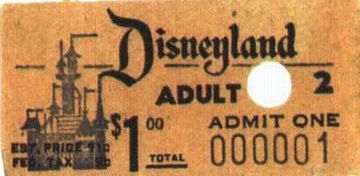
Published on July 17, 2014 11:31
July 16, 2014
July 16, 2014

July 16, 2014
We all have ideas what a home means to individuals, but for me a home needs to be a fortress. As one gets older, I find the external life out of my home to be distasteful. I’m consistently repulsed by how humans interact with and among themselves. Ever since I was a child, I have enjoyed the idea of having space, where my enemies can never find me. When I was living in Beverly Glen, I had a secret hideout that was basically under a tree that had full limbs of leaves hiding a vacant area, where I could clearly hide, and even put some of my favorite toys and books in place. I remember placing my favorite books there, but I would protect them by covering it with a plastic bag. I often sneaked out of my family home into a world of my own making, which was under the tree, that was in reality in my backyard. But as I got older I found other locations to hide out in, and what was important to me was a shaded area, that had no foot traffic going by it.

As an early reader of comic books, the one thing that impressed me about Batman was his Bat-Cave. Here he can work in secret with his various tools to fight crime. I was intrigued by his laboratory, and quite impressed that even while he was working in the bat-cave he would wear his full costume. In other words, he had a work uniform and even though he was self-employed, his own-boss in a sense, he kept the appearance of working by wearing his costume, even though no one was around to watch him work - except for us invisible readers of the comic book. Which gave me the idea to wear my own work uniform, which was a lab coat that I got my parent’s closet. I stashed it under the tree among the books and toys. Once I entered the enclosed area, I would put on my lab coat and do some work. Which at that time was to play with my toys and do some reading.
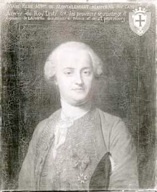
As I got older, meaning when I became an adult, I was fascinated with Marc René, marquis de Montaiembert, who was an 18th century French military engineer and writer. He was famous for his work on fortifications, and wrote a classic book “La Fortification perpendiculaire, ” which was his theory on making forts suitable to modern conditions of warfare. He was very much inspired by Vauban who was a Marshal of France, who designed the fortifications, but he also wrote about how to break into a fort as well. One of his contributions was to make a radical suggestion of giving up some French land that was indefensible to allow a stronger border with France’s neighbors.
When I was looking for a house to buy and live in, I for sure wanted something that was like a fort that will keep the outside world ‘out’ and me being me, separate from a population that I really don’t care for. Israel appears to me to be more as a fortress than a country. Which technically I find pleasing. The restrictions of space, time, and its borders to keep out a population is something that is totally understandable to me. In fact, it inspired me when I got my home. Not only do I have security cameras, alarms, but also two-way mirrors where I can look out, but no one can look in. Also besides having standard locks, my doors have a series of codes, that are changed once a month. Once secured in my world, I can let my imagination roam and create my own special landscape of dreams and desire.

I was very much taken by the home of Turner in the film “Performance.” James Fox’s character is on the run from his fellow gangsters, and here he found his own fortress, right in the middle of London. Inside this house, it had its own rules and logic, which were not only an erotic turn-on for me, but also I love the separation of real life that was out there, and the life that was being performed inside the structure. In such a place, I can explore my sexuality, my art, and desires all in one spot.
Published on July 16, 2014 11:00
July 15, 2014
July 15, 2014
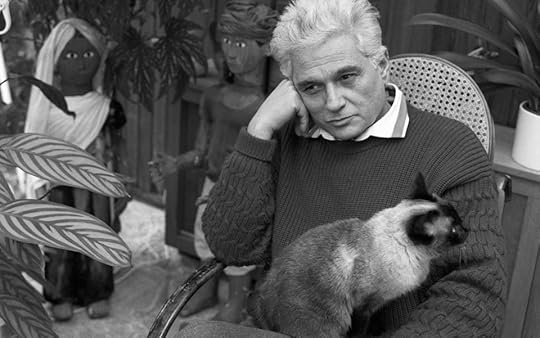
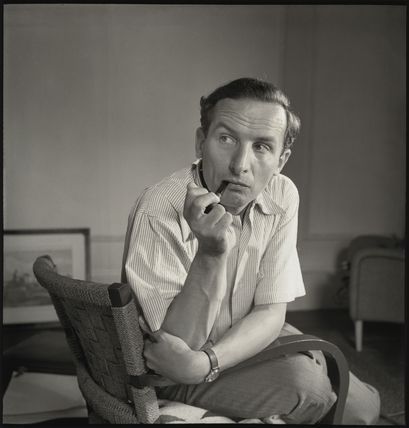
July 15, 2014
How I see things is slightly different from the way you look at things. I usually have a single word or a sentence, and I try to get something visual from that vocabulary. The funny thing, once it becomes ink on a page or a font on your laptop, it appears to change its meaning. I make a specific image, but when I have the honour to describe that representation, some sort of magic takes place where either by chance or a curse, it changes to another beast. But my observations are often tainted by a certain amount of presumption on my part. As I sit down at my writing table, and start to write, it somehow goes through a transformation that is totally a mystery to me. As I mentioned in another essay, the journey is the thing, not the destination.

As a teenager I met the actor Jan-Michael Vincent in Malibu, very close to Topanga Beach. We would go to parties there, and at least several times I have come upon Jan-Michael, although I just remember shaking his hand and never actually had a conversation with him. I was very much raised by seeing his handsome face in various forms of media, including of course, the television set. What I found interesting is that he seemed to be exactly what I imagine him to be, through his various roles I have seen in his films and TV work. He was just as handsome as what I have seen in the printed and electronic media. Also I had the impression that he was very much of a surfer, because one, he lived near the beach, and I don’t recall ever seeing him without a shirt. I didn’t see a surfboard, but I just presumed that he had one for some reason. He had a pretty wife, who at the time, looked just as golden blonde as he, and everything worked perfectly as in a publicity photograph. It was a shock to see him in later years, when he slowly lost his beautiful looks, and became more haggard, angry, and drunk looking. But even in one’s decay, you can see the traces of his beauty and that appeals to my aesthetic. You start off with a beautiful thought or image, and it slowly turns either ugly, wrong, or painful. Yet, like in life, I just have to accept those changes for the better or worse. Nevertheless the image I have in my head, is like a tattoo on my perception or thought, yet is it a correct one?

When one sees an image of the famous painting of “Mona Lisa” are we actually seeing the painting? I suspect not, because of the perception of the print-maker and how it’s cropped in a magazine or on a poster board, it can change everything. A writer, that I greatly admire, is Lydia Davis, because her observations are so personal, yet the landscape appears to be such an impartial site. Nevertheless as a writer one is allowed to mess with perception, to fit it in one’s vision.
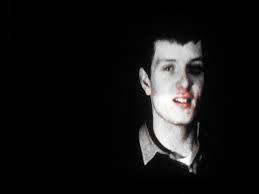
I have been disappointed with Ian Curtis, for the reason, that his death seemed predictable. Although one hears through personal accounts that he wasn’t that miserable of a person, yet, his suicide feeds into the Joy Division aesthetic. The perception when you hear his music is that he would kill himself. We don’t need to know why, it just seems to be written out in the first two Joy Division albums. There is no twist to the story, and even more banal, he seemed to be listening to Iggy Pop’s “The Idiot” or/and watching Werner Herzog’s “Stroszek” at the time of his death. If the incident wasn’t so tragic, it would almost be comical. On the other hand, he has become the pin-up figure for those who flirt through image than reality. But then again, reality is filtered through image, and therefore a performance of some sort, despite the fact that tastelessness takes place. More likely he suffered in private, and it is quite insensitive for me to comment on such a private moment like death, yet, it was played out in his work. If not specifically, it was in the packaging, the tone of the songs. His sense of despair, had beauty, but when death came it became a vulgar incident. I can’t listen to Joy Division anymore, because his death sort of cheapened the original listening experience. It put a period, not a comma to a life that should have gone on.
The Palestine/Israeli conflict will neither get better or worse - it will just be on a tape loop where no one wants to make changes to, because perhaps it suits the powers-to-be. The very nature of destruction becomes a backdrop to a staging of one’s entertainment. I wonder through the garden of earthly delights, to smell the flowers, watch and listen to the chirping birds, and then go in, and write something of a horror show.
Published on July 15, 2014 11:43
July 14, 2014
July 14, 2014
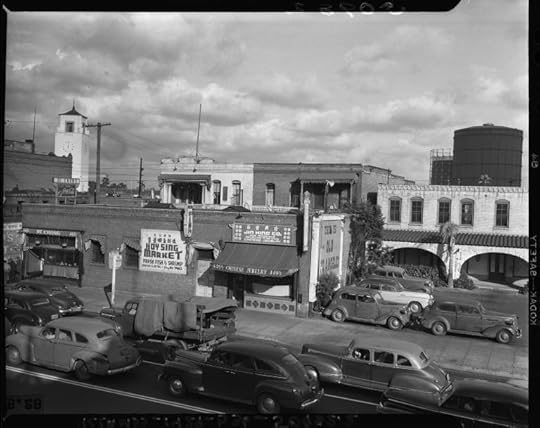
July 14, 2014
I was walking in Chinatown, taking photographs with my phone camera, to do some research for a journal entry, when I came upon a gentleman exiting a building. I was photographing the faded sign on the building, which one can find everywhere in downtown. There is a beauty of history being erased in front of one’s eyes, and of course, I wish to capture the image before the signage is painted over, or worse, the building perhaps being torn down. The gentleman in question, which I have to presume is Chinese, came upon me, and at first was polite, but clearly he wanted to see what I photographed. I told him the truth that I love architecture and especially the structures around Chinatown. He called upon to see the photograph that I just took. I showed it to him, and he said to me, in so many words, that I must trash the image.
I asked him why? He just looked straight at me and said that I must trash the image, and must do it now. I wasn’t upset, but just perplexed why he would want me to do something like that, especially photographing an old building, and one image of that as well. Other men began to emerge from the building as well, and it seemed like they knew what the issue was. They were speaking in Chinese among each other, and there were at least four men surrounding me. At least two were consistently keeping their eyes on me. I tried to walk away in a non-threatened manner, but they blocked me off, and sort of forced me to be surrounded by them. One of them pushed me and I lost my balance, but the guy behind me caught me before I hit the ground. One of them took my phone, and it was still active, due that I kept it from turning itself off. He went to my photo and trashed it. He then handed the camera back to me, and told me not to take photographs of the building. Then as soon as he told me this, all four of them headed back to the building without looking back at me. I just walked away.

That incident was so odd to me. The building had a very faint image on its side of what looks like a painting by Gustav Klimt, and I never told anybody this, but Klimt’s work seems so Asian to me. I think it may be due to the gold paint or the golden image that runs through his work like “Portrait of Adele Bloch-Bauer” and “The Kiss.” I’m no art expert (who is?) but for whatever reasons I always think of any material that has layering of gold leaf looks “asian” to me. Yukio Mishima had his image of the golden Pavilion in Kyoto, and in a way, this building strikes me as a place of great beauty, but is slowly being erased by time and various attempts to re-design the exteriors. I often felt heartbroken, and I just wanted to capture a moment where one can briefly view the past of this building, but alas, I was stopped and the image was destroyed.
Cowardliness stopped me from going back to the building. Violence has a way to make me feel like I should avoid certain situations, and clearly this was one of them. The most I fear is not violence out of anger or even fear itself, but just the ability to do an act of aggression without giving it a second thought. It is not even an act of cruelty, but more of a power by people who can do it, because they simply can. Of course, this brings a certain amount of humiliation, but if I have to swallow something, I rather it be shame than my teeth. Yet to choke on my humiliation is clearly something I have to get accustomed to. Perhaps for the rest of my life.
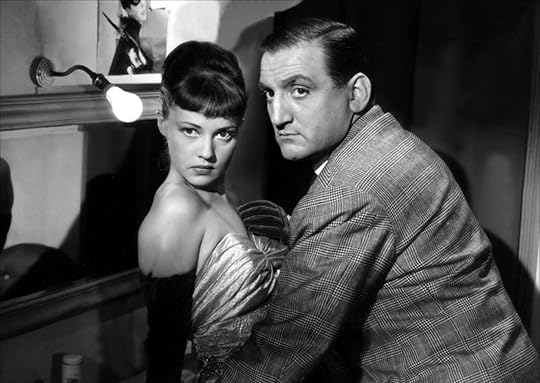
Nevertheless, it is usually art that refreshes my troubled soul, and the one film that I keep going back to is “Touchez pas au grisbi” (“Don’t Touch That Loot”). Perhaps it’s the sense of family that I imagine being the gangster life, or the professionalism of men working together, that gives me some comfort. I was trying to imagine the men who accosted me outside the Chinatown building as perhaps a Chinese version of the French gang in the film. Whatever. I do what I have to do, so I can escape.
Published on July 14, 2014 12:16
July 13, 2014
July 13, 2014
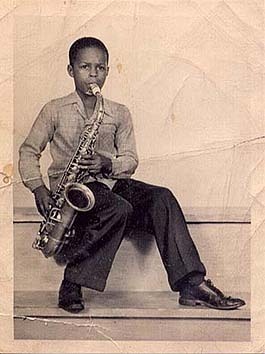
July 13, 2014
“Truth is Marching In” by Albert Ayler is one of the great recordings ever, because it displays a certain amount of chaos, yet it contains itself in a melody that reminds me of my childhood. Perhaps from a Shirley Temple film, but one imagined not actually seen. The conflict between melody and noise is something that I can only listen to nowadays. This morning I was watching the bombings in Gaza, and I noticed the beauty of the night, or the darkness and seeing flashes of light all of a sudden. The camera was stationary, but one got a bird’s eye view of the landscape and you can’t see the buildings go down, or people being harmed, but you do see flashes of light. It makes me think of Fourth of July fireworks, but with the bombings, the lighting is less aesthetic but somewhat more beautiful in its starkness.

The after-effects of destruction is never good. The rubble is the hangover from the joy and high of destruction being committed the night or day before. The one reason I go back to music is to see destruction and beauty on the same playing field. It’s a tennis match, but there is no winner or loser, it is just the pleasure of the game being played. For whatever reasons I don’t have that ‘victory’ or ‘defeat’ gene in my DNA, I simply like to pass the time, in its most pleasurable way. Life as an endless loop can be very much a nightmare, but if one added a certain amount of tension in the way one lives their life, it gives moments of a rise and of course what rises must eventually come down. To be stuck on repeat and go through one’s life as a movie one has seen over and over again, is truly not a life. I think of Bob Crane’s endless amounts of film footage that he apparently shot himself of having sex with various women. One time is fun, twice is dirty, and endless amount of footage becomes wallpaper. War and its coverage in the various forms of media are that way as well. I have seen so many detailed images of death from bombings that it becomes itself pointless. I feel numb. Yet I can admire the beauty of the flashes as it hits the ground from high above, and knowing that death comes after or at that moment, makes it more profound to me.
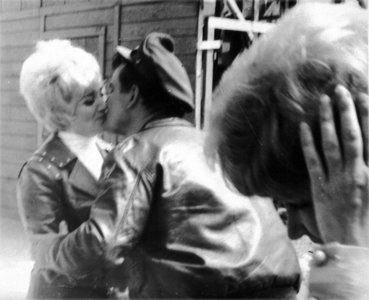
The families that will have to deal with the deaths, and will continuously do so, in their own intricate way of dealing with tragedies. Friends and families will never forget, but over time, the public will soon go on to some other tragedy - because like Bob Crane’s videos, it becomes more of a habit than anything else. The one thing about obtaining and dealing with power is that the results are not all that important. The ability to destroy, as well as creating, is something one does, because they can do it. It is as simple as that.
Published on July 13, 2014 12:03
July 12, 2014
July 12, 2014
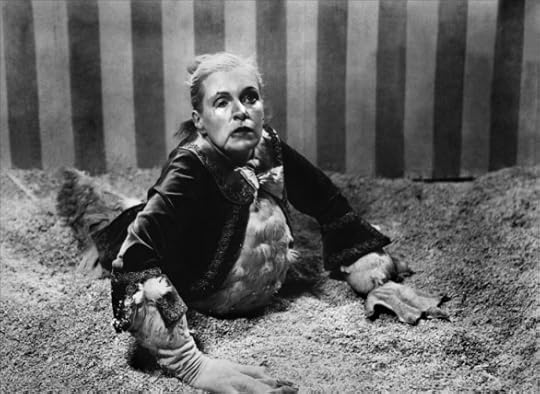
July 12, 2014
I have been writing poetry for my whole life. Yet it is difficult to describe the horrors and put that on paper. I usually write with green ink, because for me, that color represents desire and hope. But to be honest, it is futile to think that I can change the world with my writing, and whatever it’s green or black ink, it comes out white on white piece of paper, and barely readable. I’m intrigued by the art of the sentence, the way the lines break on a page with respect to poetry. It is these little pleasures that keep me on the page and holding onto my pen. On the other hand, I don’t see much hope for the world outside my studio or writing space.
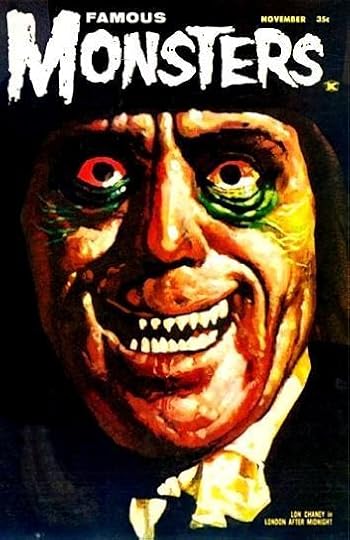
I have always been fascinated by a world that I wasn’t allowed to see. As a small child I pretty much learned to read by devouring “Famous Monsters of Filmland” edited by Forrest J Ackerman, especially articles on Tod Browning. As a ten-year old, I had a favorite filmmaker, yet I never saw any of his films. I just loved the film stills I have seen in the magazine, such as “Dracula, ” and anything with Lon Chaney. I was intrigued with Chaney due that he wore the most bizarre and scary make-up. The photograph of him dressed up as the Phantom of the Opera, scared me, but everything he did with Tod Browning as his director, seemed impossible to see, especially when you are ten-years old, and this was all before VHS video or DVDs. The one film that seemed taboo was Browning’s “Freaks.” Quite often, “Famous Monsters of Filmland” would have articles and images from this film, and it truly captured my imagination. I couldn’t draw, but I could write, so I started writing poems devoted to the images I have observed in the magazine. As a teenager I started to read French surrealist poetry, and I was struck with the image of filmic horror and the surrealist imagination, as being married, or perhaps connected to the hip, like the Dolly Sisters.
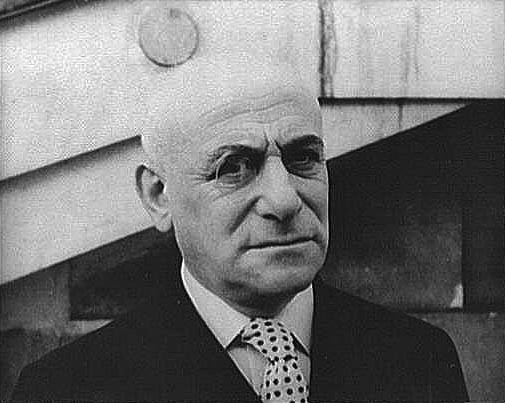
As a poet, I strived to be as cold as Richard Stark’s “Parker, ” in that I want to plan out the poem as a route on a map, or at the very least a destination from there to here. To take everything that is out there and make it into my home, or at least in a position where I can control or contain a world that I can call my own. Like my favorite poet, Max Jacob, I’m often at odds with the world, which in turn hates me. Everything I have done in life has ended up as failures, on the other hand, I wear ‘failure’ as a badge of pride. Like Thoreau, I’m interested in the idea of survival in the face of hostile elements, historical change, and the most important, natural decay. I think this is exactly what I sense with respect to the figures and characters I saw in “Famous Monsters of Filmland.” To survive in a world that is hostile to the monster, the vampire, and best of all, the side-show circus freak, captured my imagination and my soul.
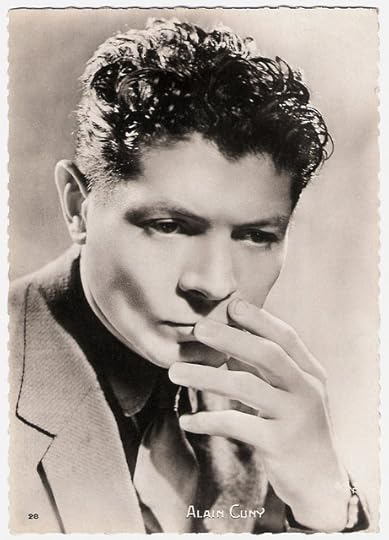
A lot of my childhood friends played with toys like G.I. Joe, and I think later they were in a position to join a culture that was open and friendly to them. I, on the other hand, was on the side of the mad poets and monsters. As a young adult, I became attracted to the work of Alain Cuny, a French actor who was likewise a close friend of Antonin Artaud. He appeared in numerous films made by Fellini, but the role that I am mostly impressed with is the character that he played in “Emmanuelle.” He played an older man named Mario who convinces Emmanuelle that monogamy will die out, and that lust will win out over guilt or reason. He leads Emmanuelle to one sexual adventure after another, and like the characters in the monster magazine, I have found another hero.
The sad thing in life is that I just have notebook after notebook with writings in green ink, that is barely readable. Yet I continue, because as I said, the destination is just a direction, in which I don’t think will bring me to a conclusion.
Published on July 12, 2014 10:05
July 11, 2014
July 11, 2014
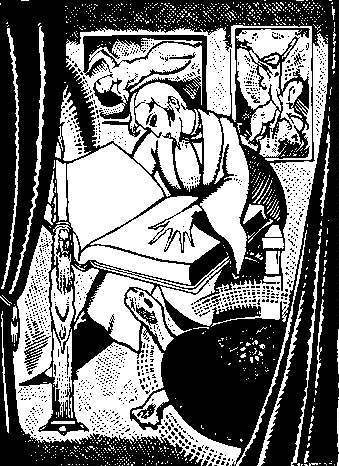
July 11, 2014
“Art for art’s sake.” If I had a religion that would be my mantra. Before I get some sleep at night, I utter that phrase at least five times, to hopefully have a successful night of sleep and peaceful dreams. When I awaken in the morning, the first thought is “art for art’s sake.” From an early age, I have always loathed art that represents a reality, besides beauty, it should reflect the need to express oneself over anything else. The thought of art as being used for the betterment of society is simply boring.
Two things that really upset people about me, is that I will never ever vote again in a presidential election, and two, I think art is the answer to everything. If I had to choose between not having art or not eating, I think I would be OK to starve to death. I can’t imagine a life without art. From the profound to the artificial, I need it like a human craving oxygen. I don’t even look at people as being complicated. All they are to me are living sculptures, where I can admire their beauty or aesthetic. The fundamental reason why I like fashion is that it represents the “ideal” than say reality. Imagination is the real currency in our world, and the paper money and coins that float in the market place are basically vulgar tools utilized by the masses, to somehow give themselves the false impression that somehow they can be equal on this planet. The only thing that will free us is art and the imagination that go hand-in-hand. Utopian societies can’t exist, but if one can control their bedroom or studio, then that’s half the battle.
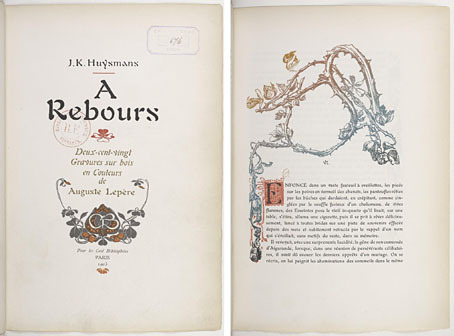
I’m intrigued by what the author Joris-Karl Huysmans commented regarding naturalism in art and literature. After writing various works of literature under the naturalist aesthetic he commented, if I may quote him in length:
“It was the heyday of Naturalism, but this school, which should have rendered the inestimable service of giving us real characters in precisely described settings, had ended up harping on the same old themes and was treading water. It scarcely admitted — in theory at least — any exceptions to the rule; thus it limited itself to depicting common existence, and struggled, under the pretext of being true to life, to create characters who would be as close as possible to the average run of mankind.”
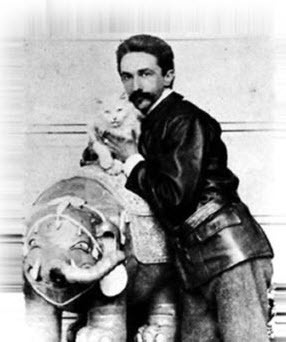
The need to see oneself in literature I think is bogus. To save time, people should just look at themselves in the mirror. To search out the ideal, or the beauty is an important destination for one to do in their lives. I’m only interested in personalities that are exceptional, and if they’re witty, better yet! If “art” is my religion, then Marie Joseph Robert Anatole, Comte de Montesqulou-Fézensac or better known as Robert de Montesquiou is my spiritual angel that serves the purpose of art.
Every moment where I’m forced to confront a world that is not to my liking, makes me physically ill. I can vomit for hours just thinking about it, but even my vomit brings a certain pleasure to re-visit my past glories of food and drink that I clearly enjoyed. To get lost in one’s world of their own making is clearly the formula to cure the ills that are roaming outside one’s door. It is times like this that I am thankful of doors with locks! Sadly, there are times when I have to rejoin human society, which for me, is like a non-believer trying to embrace religion.
Published on July 11, 2014 12:28
July 10, 2014
July 10, 2014
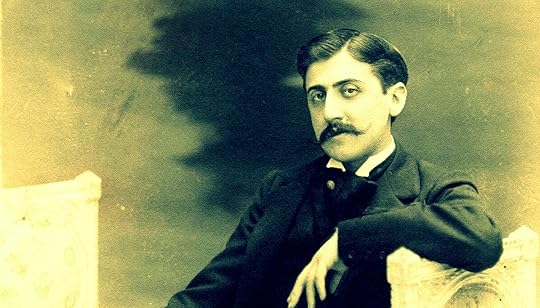
July 10, 2014
For a long time, I went to bed early. It was like I couldn’t wait till the day to end, and I would embrace the darkness that came upon me as a blessing of sorts. I usually read in bed before I fall asleep, and I was reading “My Inventions: The Autobiography of Nikola Tesla, ” which I think gave me an insane dream that night. It seemed that there was a room in my house that is devoted to experiments of all sorts. Sort of between a science laboratory and a movie set, where everything was made out of cheap cardboard. I was working in this area, realizing that maybe where I’m working does not really exist. Yet, I kept on working on an experiment that needed a great deal of electricity. But I couldn’t find a workable electric socket. Once I try to plug in my machine and the socket would itself would tear into two. The dream woke me up, and I had hard time going back to sleep. Then in that natural state between wanting to sleep and not being able to sleep, I thought of girls. The one dream girl that I have always been infatuated with is the actress Sue Lyon.
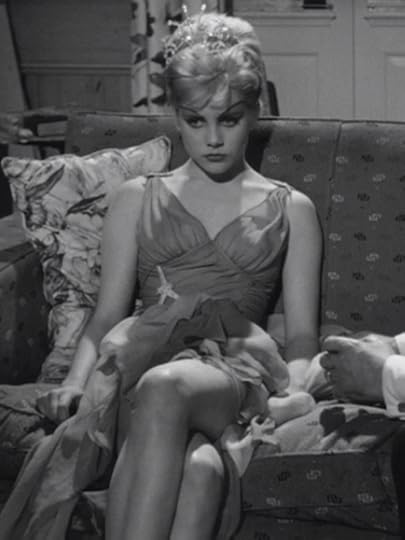
Although I know she is in “Lolita,” I don’t think the fact that she is young that made the erotic impression on me, but when she dressed up in costume, for instance, her stage play in the film, I found her enticing. She wasn’t beautiful in that sense, but there was something nasty about the way she looked in those scenes. I think it is her mouth which is sneering, and that is the first thing on her face one notice, and then I slowly look up to the eyes, which confirm her sneer. I imagine being in bed with her, and me on top of her, with that expression on her face looking at me. Face-to-face. A perfect l life of sorts, that is imagined, yet I was sleepless.

Foolishly, I turned on my reading light and went back to the Tesla book. I felt that there was only one lane on a highway, and I was on that road, and one could only move forward. I was reading chapter five “The Magnifying Transmitter, ” when I started to think of the Telstar satellite. It successfully relayed through space the first television pictures, telephone calls, fax images and gave us the first live transatlantic television feed. All in 1962, which was a period of a brief optimism, before the nightmare started. Nevertheless there is something sad about the Telstar rotating around the earth (as of October 2013), and being dead.

The lightness of the Dawn sneaks in between the window curtain folds, and I curse myself for not being able to sleep. I got up and made myself a pot of coffee, by actually pouring hot water over the grinder coffee beans and slowly watch the water disappear into the darkness. I imagine that it looked like a landscape from a distant planet, and I wonder how can I turn my brain off. I looked at my calendar and realize that I better start wring my journal entry for today. I’m starting to realize that I shouldn’t go to bed so early, because I tend to wake up within three or four hours, and it is almost impossible for me to get back to sleep. I work by my turntable, and I put on a vintage vinyl copy of Ian Whitcomb’s “You Turn Me On, ” which is something I kept from my childhood. My father took me to see him on some club on the Sunset Strip, and he wore a really nice stripped shirt, that for some reason, stayed with me. Non-sleep night brings up memories, that are just not that important.

Published on July 10, 2014 12:24



